Removal Procedure
Tools Required
| • | J 24402-A Glass Sealant Remover (Cold Knife) |
| • | J 39032 Stationary Glass Removal Tool |
- Apply masking tape to the painted surfaces around the rear window in order to prevent damage to the paint.
- Remove the reveal molding.
- Remove the rear sail panels. Refer to Sail Panel Replacement in Interior Trim.
- Disconnect the rear defogger electrical connectors.
- Use the J 24402-A in order to cut the window from the pinchweld flange.
- With the aid of an assistant, remove the rear window.
- Thoroughly shake the container of pinchweld primer (#3 black).
- Use a new dauber in order to apply the primer to exposed painted surfaces or any scratches in the metal of the flange bonding area.
- Allow approximately 10 minutes for the drying of the primer.
Grasp the edge of the molding and pull the molding from the window.
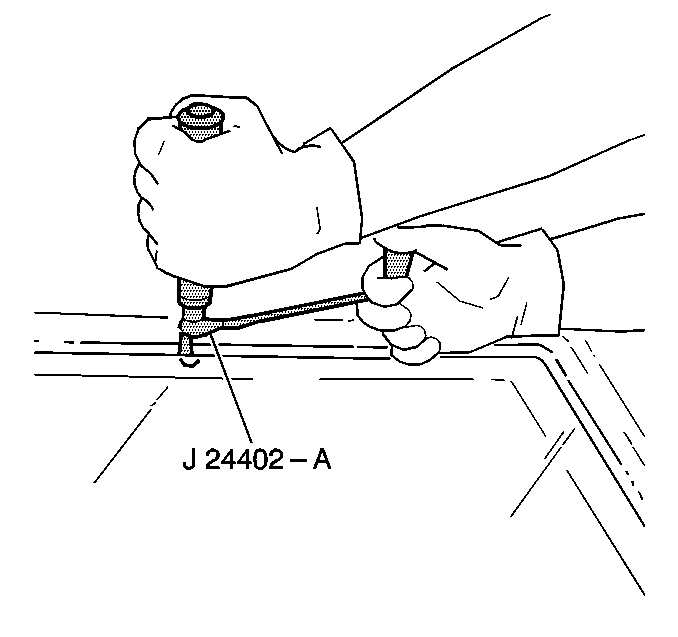
Important: Use a short blade on the J 24402-A . A long blade in the cutter may cut the rear defogger wires.
Important: If you damage the reveal molding by cutting too closely to the window surface, replace the window.
Keep the blade as close as possible to the edge of the window in order avoid damage to the painted surfaces.
Important: If corrosion of the pinchweld flange is present, or if sheet metal repairs or replacements are required, refinish the pinchweld flange. The primer needs a clean surface. If paint repairs are necessary, mask the bonding area of the flange prior to applying the color coat in order to provide a clean surface for the primer. Use material such as BASF DE17®, DuPont 2610®, PPG DP40®, or an equivalent product.
Installation Procedure
Tools Required
J 24811 Adhesive Dispensing Gun
- With the aid of an assistant, dry fit the window in the opening in order to determine the correct position.
- Use masking tape in order to mark the location of the window in the opening.
- Slit the masking tape at the window edge.
- Remove the window from the opening.
- Place the rear window on a clean, protected surface.
- When reusing the original windshield, remove all but a thin film of the existing urethane adhesive from the windshield.
- Clean the inside surface of the windshield with GM glass cleaner P/N 1050427 or the equivalent.
- Perform the following steps:
- Install the reveal molding to the edge of the glass.
- Using a new dauber, apply the windshield prep (#1clear) around the entire perimeter of the inner surface of the glass.
- Apply windshield prep (#1 clear) to any exposed edges of the window.
- Immediately wipe the primed area with a lint-free cloth.
- Thoroughly shake the container of primer (#2 black).
- Use a new dauber in order to apply the windshield primer (#2 black) to the same areas as the windshield prep (#1 clear).
- Allow approximately 6 minutes for drying the primer.
- Cut the tip of the applicator nozzle of the J 24811 in order to provide a bead of adhesive approximately 8 x 15 mm (0.30 x 0.60 in).
- Apply the urethane adhesive to the inner surface of the rear window.
- With the aid of an assistant, install the window into the opening.
- Tape the window to the body in order to minimize movement.
- Remove any excess urethane that squeezed out from the body.
- Immediately use a soft spray of warm water to water test the windshield.
- Inspect the windshield for leaks.
- If a leak is detected, use a plastic paddle in order to apply urethane adhesive to the leak point.
- Cure the adhesive.
- Connect the rear defogger electrical connectors.
- Install the rear sail panels. Refer to Sail Panel Replacement in Interior Trim.
- Remove the tape and the protective coverings.
- Clean the glass surface, and the painted surface from any residue.
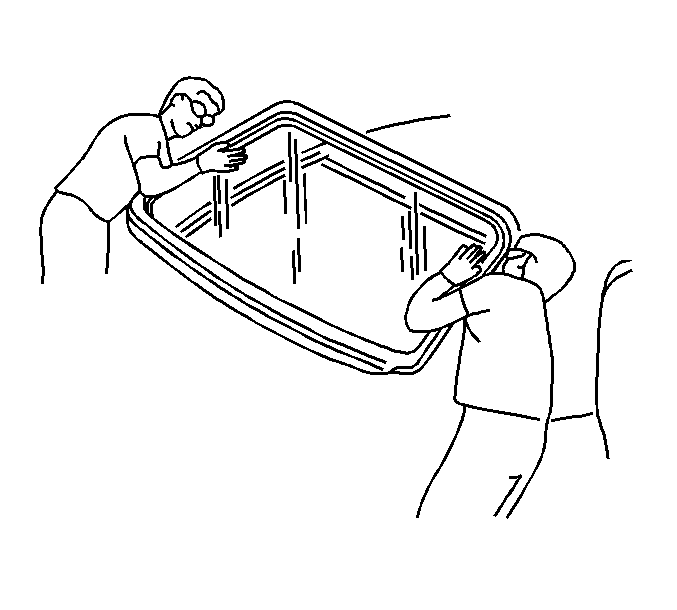
The inside of the window faces up.
| 8.1. | Remove all but a thin film of the existing bead of adhesive from the pinchweld flange. |
Do not leave any mounds or loose pieces of adhesive.
| 8.2. | Thoroughly shake the container of pinchweld primer (#3 black). |
| 8.3. | Use a new dauber in order to apply the primer to any exposed painted surfaces or scratches in the flange in the bonding area. |
| 8.4. | Allow approximately 10 minutes for drying the primer. |
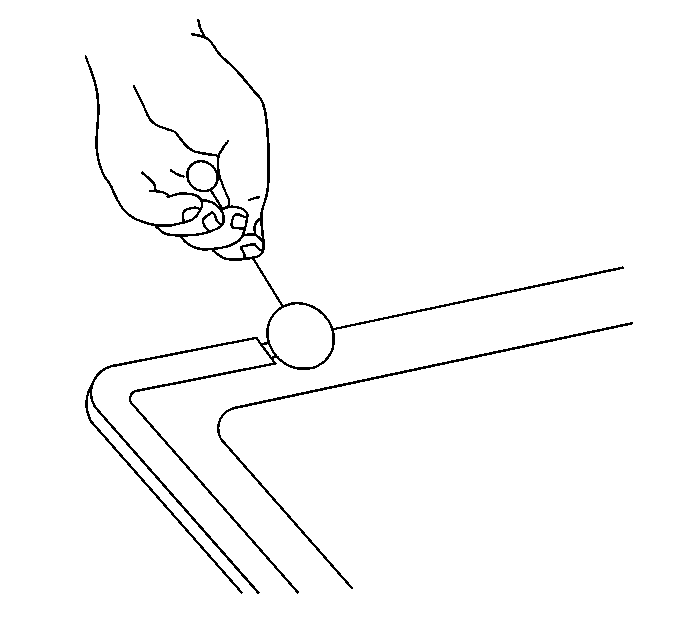
Caution: Failure to prep the area prior to the application of primer may cause insufficient bonding of urethane adhesive. Insufficient bonding of urethane adhesive may allow unrestrained occupants to be ejected from the vehicle resulting in personal injury.
Important: Take care in order to prevent the windshield prep (#1 clear) from running into the vision area of the window. This primer dries almost instantly. The primer may stain viewing area.
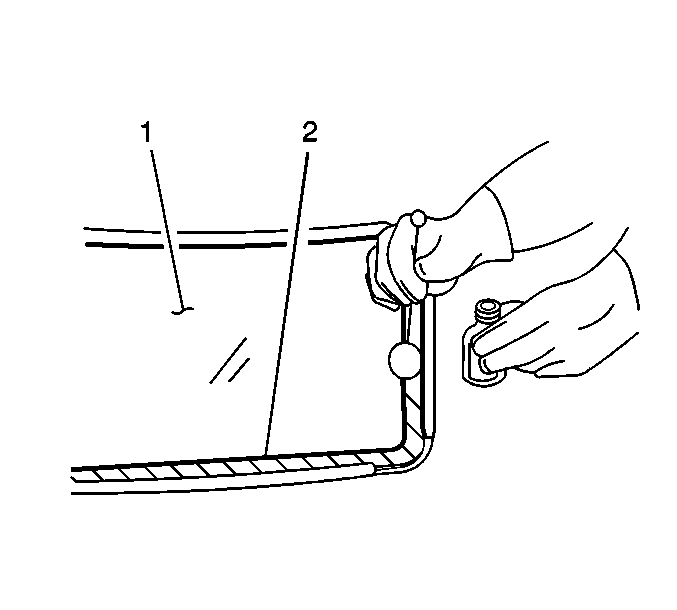
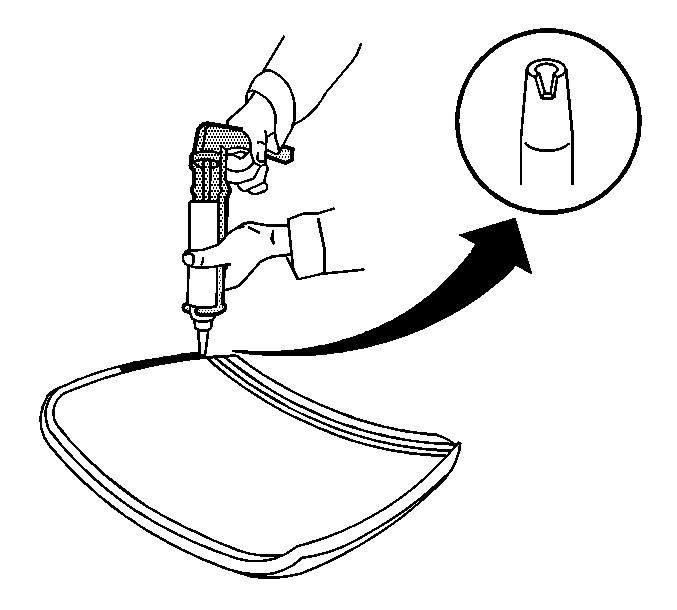
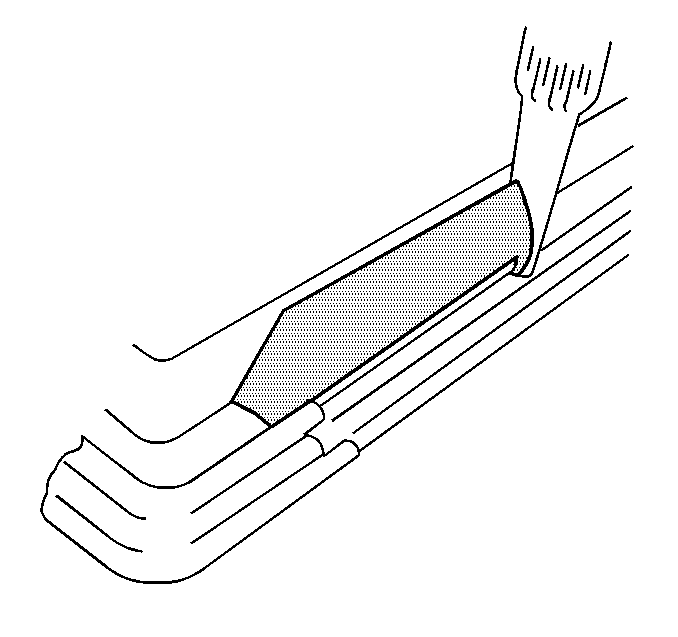
Use the inside edge of the reveal molding as a guide.
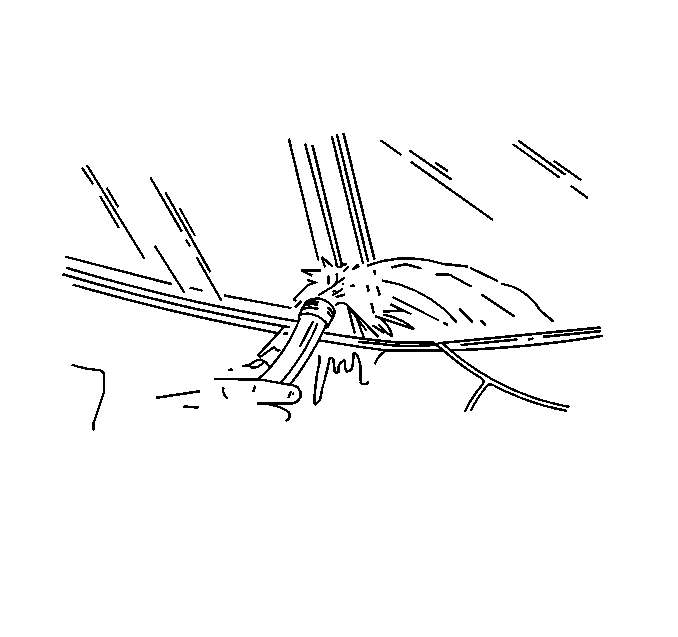
Important: DO NOT direct a stream of high pressure water at the fresh urethane adhesive.
Warm water accelerates the cure of the urethane adhesive.
Important: Do not drive the vehicle. Do not use compressed air in order to dry the urethane adhesive. Partially lower a door window in order to prevent a buildup of pressure when closing doors.
| • | Allow the vehicle to remain at a room temperature of 22°C (72°F) at 20 percent relative humidity. |
| • | Allow a minimum of 6 hours for moisture-curing urethane adhesive. |
| • | Allow a minimum of 1-1.5 hours for chemical-curing urethane adhesive. |
